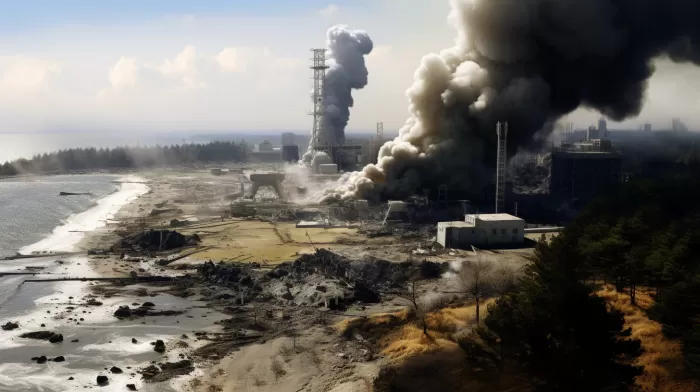Did you know that radioactivity found in New Hampshire’s streams is linked to a disaster that happened halfway across the world? Yes, you read that right. A recent study conducted by scientists found a doubling of radioactive iodine concentrations in streams of New Hampshire, compared to what they found in nearby soil. Phew! And guess where this radioactivity came from? Japan!
That’s right. The Fukushima Daiichi nuclear power facility accident that happened in 2011 after the devastating earthquake and tsunami in Japan, is responsible for this New England radioactivity. And this is something everyone needs to understand and be aware of because it shows how the incident in Japan can affect people living thousands of miles away. As researcher Joshua Landis puts it, “We live on a really small planet, and this demonstrates that what happens in Japan has the potential to affect us.”
The radioactive iodine problem
The radioisotope iodine-131, which originated in the accident’s fallout, is a potential health risk. It is a by-product of nuclear fission, highly radioactive, acutely toxic, and can cause health issues if released into the environment.
While it does have a relatively short half-life, which means it isn’t around for very long, its radioactivity levels are very high. This makes it very dangerous. However, this radioactivity also makes it easy for researchers to detect, using gamma-ray spectroscopy instruments.
But there’s another isotope, iodine-129, which is even more concerning. Though not as radioactive as iodine-131, it lasts much longer and can pose a greater hazard as it accumulates in certain areas over time. According to the researchers, “Due to its long half-life and continued release from ongoing nuclear energy production, [iodine-129] is perpetually accumulating in the environment and poses a growing radiological risk.”
What does this mean for New Hampshire?
At first glance, this might seem like a distant problem, but it’s essential to recognize that radioactivity from another part of the world has found its way to New Hampshire. The fact that such a high concentration can be found over such a large distance is worrying.
We need to take a closer look at how this might be affecting the environment, wildlife, and the health of the people of New Hampshire. The radioactivity can seep into the soil, and ultimately contaminate plants and livestock. This, in turn, can affect food sources, which means that it is not just a problem for New Hampshire but can potentially affect the entire food chain.
What can we do about it?
The immediate and most logical step is to monitor and track the levels of radioactive iodine in the environment to get a better understanding of its movement and accumulation. Researchers are concerned about the iodine in the soil and water and how it impacts the environment and health.
Efforts should be focused on developing preventive measures and creating mitigation plans in case of any radioactive contamination. This includes public education, plans for early detection and handling of contaminated produce, livestock, or water sources.
More importantly, the entire world should learn from the Fukushima disaster and work towards creating safer, cleaner, and more sustainable energy sources that can potentially prevent such catastrophic events from happening in the future.
Closing thoughts
Radioactivity knows no boundaries – what happened in Japan can affect us all, especially in New Hampshire where the consequences were felt firsthand. Although the current radioactive iodine levels found do not pose an immediate danger, we must understand the potential long-term risks and learn the importance of closely monitoring the environment and taking proactive measures to prevent future disasters from impacting our lives.



